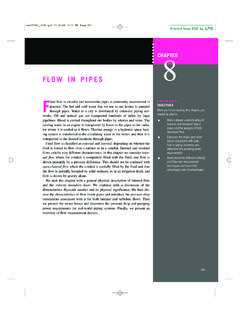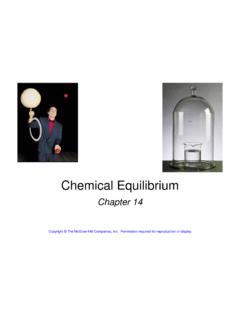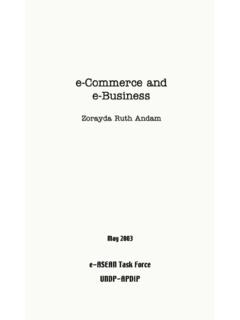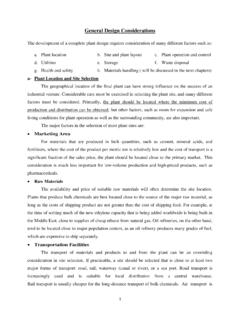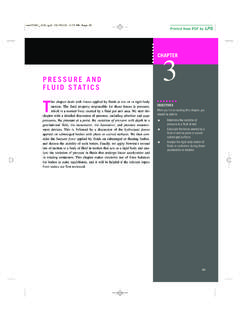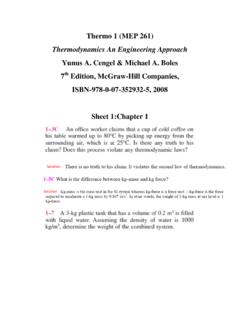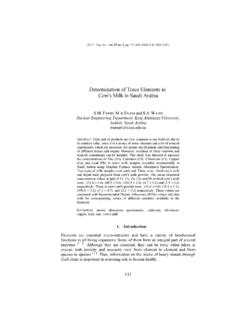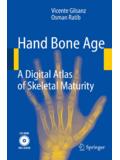Transcription of Molecular Identification of Fungi - kau
1 Molecular Identification of FungiYoussuf GherbawylKerstin VoigtEditorsMolecular Identificationof FungiEditorsProf. Dr. Youssuf GherbawySouth Valley UniversityFaculty of ScienceDepartment of Botany83523 Qena, Kerstin VoigtUniversity of JenaSchool of Biology and PharmacyInstitute of MicrobiologyNeugasse 2507743 Jena, 978-3-642-05041-1 e-ISBN 978-3-642-05042-8 DOI Heidelberg Dordrecht London New YorkLibrary of Congress Control Number: 2009938949#Springer-Verlag Berlin Heidelberg 2010 This work is subject to copyright. All rights are reserved, whether the whole or part of the material isconcerned, specifically the rights of translation, reprinting, reuse of illustrations, recitation, broadcasting,reproduction on microfilm or in any other way, and storage in data banks.
2 Duplication of this publicationor parts thereof is permitted only under the provisions of the German Copyright Law of September 9,1965, in its current version, and permission for use must always be obtained from Springer. Violationsare liable to prosecution under the German Copyright use of general descriptive names, registered names, trademarks, etc. in this publication does not imply,even in the absence of a specific statement, that such names are exempt from the relevant protective lawsand regulations and therefore free for general design:WMXD esign GmbH, Heidelberg, Germany, kindly supported by Printed on acid-free paperSpringer is part of Springer Science+Business Media ( )Dedicated to Prof.
3 Lajos Ferenczy (1930 2004) microbiologist, mycologist andmember of the Hungarian Academy of Sciences, one of the most outstandingHungarian biologists of the twentieth centuryPrefaceFungi comprise a vast variety of microorganisms and are numerically among themost abundant eukaryotes on Earth s biosphere. They enjoy great popularity inpharmaceutical, agricultural, and biotechnological applications. Recent advancesin the decipherment of whole fungal genomes promise a continuation and accelera-tion of these trends. New techniques become available to facilitate the geneticmanipulation of an increasing number of fungal organisms to satisfy the demand ofindustrial purposes.
4 The increasing importance-driven search of novel detectiontechniques and new fungal species initiated the idea for a book about the molecularidentification of kingdom of the Fungi (Mycota) appears as the sister group of the multi-cellular animals (Metazoa) as an independent, apparently monophyletic groupwithin the domain Eukarya, equal in rank to green plants (Viridiplantae) andanimals (Metazoa). Fungi are originally heterotrophic eukaryotic microorganismsharboring chitin in their cell walls and lacking plastids in their , the oomycetes, slime moulds and plasmodiophorids were consideredas Fungi based on their ability to produce fungus-like hyphae or resting the Oomycota are classified to the stramenopile algae (Chromista orHeterokonta), and the plasmodial and cellular slime moulds (Mycetozoa) belongto the Amoebozoa.
5 The Plasmodiophoromycota are among the cercozoan Rhi-zaria closely related to the foraminifers. A three-protein phylogeny of the fungiand their allies confirms that the nucleariids, phagotrophic amoebae with filosepseudopods in soil and freshwater, may represent descendants of a commonancestor at the animal fungal boundary ( ). The fungal kingdom encom-passes the Asco-, Basidio-, Glomero-, Zygo- and Chytridiomycota. The formerfour phyla are terrestrial Fungi developing nonflagellated spores (aplanosporic),whereas the Chytridiomycota represent aquatic and zoosporic (planosporic) Fungi ,which split into three individual taxon groups, the aerobic Blastocladio- andChytridiomycotasensu strictoand the anaerobic Neocallimastigomycota.
6 TheZygomycota are among the most basal terrestrial Fungi , which evolved in aparaphyletic manner. Hence, the phylum was divided into different subphyla,viithe Mucoro-, Kickxello-, Zoopago- and Entomophthoromycotina, whose phylo-genetic relationships are not fully understood yet. In the phylogenetic tree shownin , the Entomophthoromycotina group together with the Ichthyosporea, arelationship, is not well supported by clade stability develop a wide diversity of morphological features, which are shared withmany Fungi -like microorganisms ( ), among those the white rust and downymildew Fungi ( ) are obligate parasites of plants and develop fungus-likehyphae with haustoria (ht) in asexual and thick-walled, ornamented oospores (os)from fertilized oospheres after fusion of an oogonium (og) with an antheridium (at)during sexual reproduction ( ).
7 The distribution of Fungi among the various ecological niches of the biosphereseems to be infinite. Estimates suggest a total of million fungal species, only lessthan a half has been merely described yet. This implies a backlog demand, whichcomes along with a rising importance of novel techniques for a rapid andFig. 1 The evolution of the Fungi and allied Fungi -like microorganisms based on a concatenatedneighbor-joining analysis using mean character differences as distance measure on 1,262 alignedamino acid characters comprising translation elongation factor 1 alpha, actin, and beta-tubulin(500, 323 and 439 characters, respectively) from 80 taxa.
8 The prokaryotic elongation factor Tu,MreB (TM1544), and FtsZ (both homologous to actin and tubulin, respectively) fromThermotogamaritimawere used as out group taxon representing the bacterial domainviiiPrefaceFig. 2 The morphological diversity of Fungi and Fungi -like microorganisms. (a f): basidiomy-cetes (Agaricomycotina; Photos: M. Kirchmair); (g) oomycetes (Peronosporales; Photo: ); (h j): multicellular conidia from imperfect stages of ascomycetes (Pezizomycotina);(k s): zygomycetes (Mucoromycotina; Photos: K. Hoffmann, scanning electron microphoto-graphso&q: M. Eckart & K. Hoffmann): (k,l,p,r,s) different types of multispored sporangia,(m,n,o): different types of uni fewspored sporangiola; (t x): reproductive structures (zoospor-angia) from anaerobic chytridiomycetes (Neocallimastigomycota; Photos: K.)
9 Fliegerova);(y,z): plasmodiophorids (Plasmodiophoromycota; Photos: S. Neuhauser & M. Kirchmair).Prefaceixunambiguous detection and Identification of Fungi to explore the fungal diversity asa coherent whole. Molecular techniques, particularly the technology of the poly-merase chain reaction, have revolutionized the Molecular biology and the moleculardiagnosis of Fungi . The incorporation of Molecular techniques into what has beentraditionally considered as morphology-based taxonomy of Fungi helps us in thedifferentiation of fungal species and varieties. Databases of genomes and geneticmarkers used as sources for Molecular barcodes are being created and the fungalworld is in progress to be unveiled with the help of bioinformatics tools.
10 Genomeprojects provide evidence for ancient insertion elements, proviral or prophageremnants, and many other patches of unusual composition. Consequently, itbecomes increasingly important to pinpoint genes, which characterize fungalorganisms at different taxonomic levels without the necessity of previous cultiva-tion. Unfortunately, the initiative of an excessive use of Molecular barcoding hasbeen hampered by a lack of sufficient and novel synapomorphic nucleotideFig. 2(continued) (a) basidiocarp ofSchizophyllum commune,(b) basidiocarp ofDaedaleaquercina,(c) hymenophor from basidiocarp ofDaedalea quercina,(d) basidiocarp ofTrametessp.
